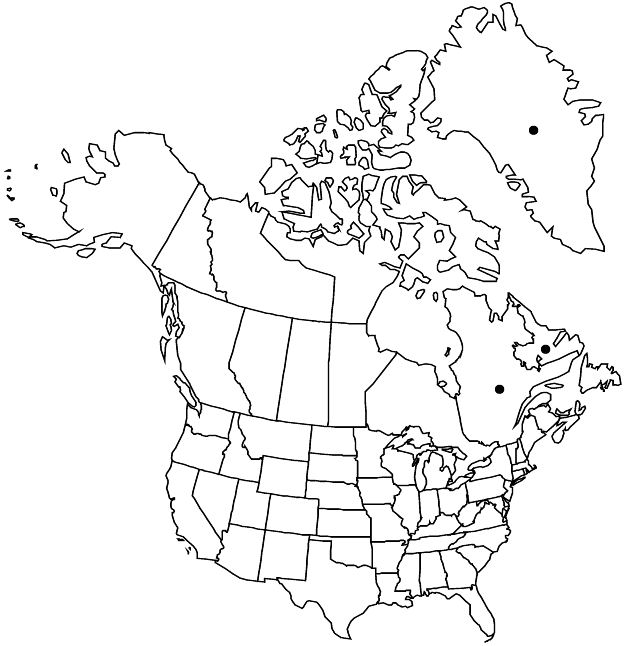Difference between revisions of "Alchemilla glomerulans"
Bull. Herb. Boissier 1(app. 2): 30. 1893.
FNA>Volume Importer |
FNA>Volume Importer |
||
| Line 12: | Line 12: | ||
|name=Alchemilla obtusa | |name=Alchemilla obtusa | ||
|authority=Buser | |authority=Buser | ||
| + | |rank=species | ||
}} {{Treatment/ID/Synonym | }} {{Treatment/ID/Synonym | ||
|name=A. obtusa var. comosa | |name=A. obtusa var. comosa | ||
|authority=Brenner | |authority=Brenner | ||
| + | |rank=variety | ||
}} {{Treatment/ID/Synonym | }} {{Treatment/ID/Synonym | ||
|name=A. pseudomicans | |name=A. pseudomicans | ||
|authority=Linnaeus | |authority=Linnaeus | ||
| + | |rank=species | ||
}} {{Treatment/ID/Synonym | }} {{Treatment/ID/Synonym | ||
|name=A. vulgaris var. comosa | |name=A. vulgaris var. comosa | ||
|authority=(Brenner) Fernald & Wiegand | |authority=(Brenner) Fernald & Wiegand | ||
| + | |rank=variety | ||
}} | }} | ||
|hierarchy=Rosaceae;Rosaceae subfam. Rosoideae;Rosaceae tribe Potentilleae;Alchemilla;Alchemilla glomerulans | |hierarchy=Rosaceae;Rosaceae subfam. Rosoideae;Rosaceae tribe Potentilleae;Alchemilla;Alchemilla glomerulans | ||
| Line 45: | Line 49: | ||
-->{{#Taxon: | -->{{#Taxon: | ||
name=Alchemilla glomerulans | name=Alchemilla glomerulans | ||
| − | |||
|authority=Buser | |authority=Buser | ||
|rank=species | |rank=species | ||
| Line 60: | Line 63: | ||
|publication year=1893 | |publication year=1893 | ||
|special status= | |special status= | ||
| − | |source xml=https://jpend@bitbucket.org/aafc-mbb/fna-data-curation.git/src/ | + | |source xml=https://jpend@bitbucket.org/aafc-mbb/fna-data-curation.git/src/f50eec43f223ca0e34566be0b046453a0960e173/coarse_grained_fna_xml/V9/V9_493.xml |
|subfamily=Rosaceae subfam. Rosoideae | |subfamily=Rosaceae subfam. Rosoideae | ||
|tribe=Rosaceae tribe Potentilleae | |tribe=Rosaceae tribe Potentilleae | ||
Revision as of 22:41, 16 December 2019
Plants medium-sized, grass green or glaucous, often becoming reddish orange when young changing to dark brownish especially on margins of leaves and flowers (young flowers are yellowish), often coarse, 30–40 cm. Stems appressed-hairy throughout (hairs becoming looser and ± ascending distally). Leaves: stipules translucent to pale green, appearing brownish upon drying; petiole thickly, usually densely appressed-hairy throughout, rarely glabrous or sparsely hairy (on spring leaves); blade reniform to orbiculate, 7–9-lobed, margins undulate, basal sinuses narrow, middle lobes equal to longer than their half-widths; incisions absent; teeth: sometimes proximal sides at least slightly connivent, slightly concave near apex, slightly asymmetric, apex subobtuse to acute, abaxial surface with nerves hairy throughout, internerve regions ± hairy throughout, adaxial light to grass green, sometimes glaucous, margins and folds usually turning reddish orange, sparsely to densely appressed-hairy throughout or only on folds. Inflorescences: primary branches densely appressed- to ascending-hairy; peduncles appressed- to ascending-hairy or glabrous. Pedicels mostly glabrous or some of the proximal hairy. Flowers: epicalyx bractlet lengths 0.5 times to almost equal to sepals (narrower); hypanthium glabrous or sparsely appressed-hairy (on proximalmost flowers). Achenes not exserted.
Phenology: Flowering late Jun–Sep.
Habitat: Moist herb slopes, willow scrub
Elevation: 0–500 m
Distribution

Greenland, Nfld. and Labr. (Labr.), Que., Europe.
Discussion
In contrast to Alchemilla wichurae, A. glomerulans occurs throughout the southern (unglaciated) portion of Greenland.
Selected References
None.